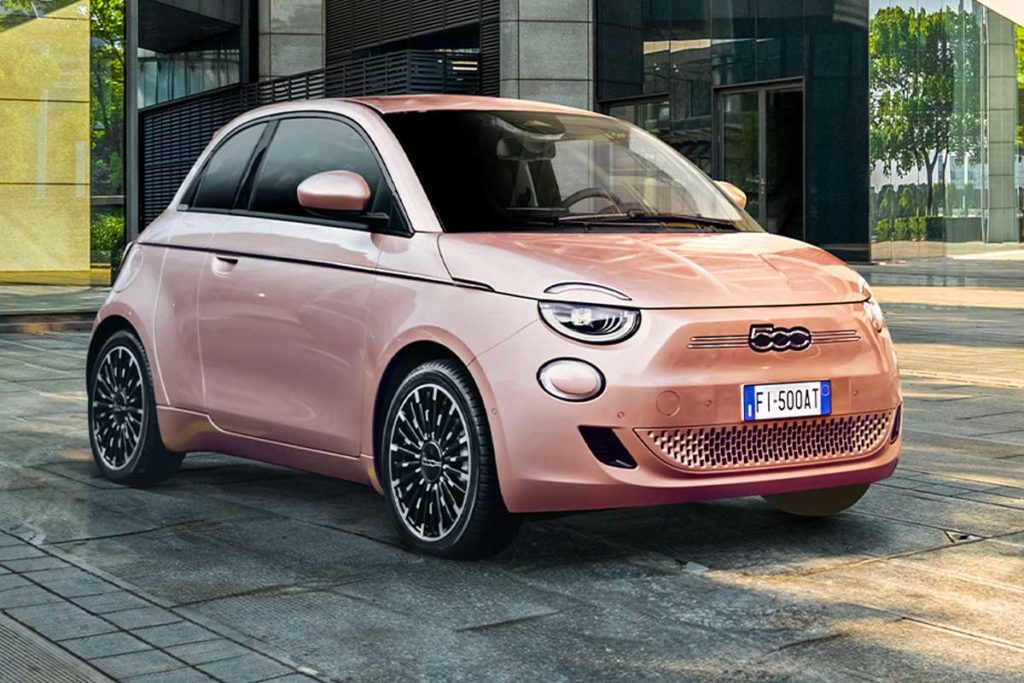
The electric Fiat 500 has had a rollercoaster ride since its launch. Although its beginnings were encouraging, economic reality caught up with the model, and sales quickly plummeted. At the heart of the problem: price. The main reason for the slowdown in sales was rising costs, especially for the battery. But why should Fiat doesn't it simply decide to lower the price to boost sales?
Fiat 500e prices have evolved over the years. In 2020, the entry-level model with 23.8 kWh battery was priced at €24,500 (Action version), while the 42 kWh version was €34,900 (La Prima version). By 2022, these prices had climbed to €26,200 and €31,700 respectively, with prices stable in 2023 at €30,400 for the 23.8 kWh version, and €33,900 for the 42 kWh.
| 2020 | 2021 | 2022 | 2023 | 2024 | 2025 | |
|---|---|---|---|---|---|---|
| Fiat 500e 23.8 kWh | 24 500 € | 26 200 € | 30 400 € | 30 400 € | 30 400 € | |
| Fiat 500e 42 kWh | 34 900 € | 27 500 € | 31 700 € | 33 900 € | 33 900 € | 33 900 € |
Rising prices have not been without consequences. Although Fiat relied on subsidies for the purchase of electric vehicles to make the 500e affordable, the reduction of these subsidies over the years has exacerbated the problem. These subsidies, which supported the purchase of electric cars in many countries, have gradually disappeared, highlighting the price difference between the 500e and its competitors. And, despite Fiat's desire to boost sales, a price cut doesn't seem to be on the agenda.
The question that naturally arises is why doesn't Fiat opt for an immediate price reduction? The answer lies in the cost of batteries, one of the main cost items. The Fiat 500e is equipped with Samsung SDI batteries, manufactured in Poland, which are expensive to produce. Although the exact cost of production has not been officially communicated, sources such as the Evclinic website indicate that the replacement of a 42 kWh battery is billed at around €13,000 by Stellantis. This represents a significant cost, which Fiat must of course factor into its selling price.
But if Samsung batteries are expensive, there's also the margin that Fiat allows itself. On the second-hand market, a 42 kWh battery can be negotiated at around €5,000. This suggests that Fiat could buy these batteries from Samsung at a price of around €5,000 for the 23.8 kWh version and €10,000 for the 42 kWh version. By way of comparison, the future 500 with a hybrid combustion engine will cost under €20,000.

Another factor preventing a price reduction is production. The Mirafiori plant, which produces the electric Fiat 500, is currently operating at reduced speed. This limits Fiat's production capacity, and prevents it from taking advantage of the economies of scale that could result from increased production. Manufacturing costs for the 500e remain high, making it difficult to reduce prices without jeopardizing profitability. This is why we production of the 500 hybrid by the end of 2025 is eagerly awaited.
Faced with this situation, Fiat seems to have decided to change its strategy. The company is now taking control of battery production. It should be remembered that the next generation of batteries for the electric Fiat 500 will be produced by Fiat. as part of the joint venture between Stellantis and CATL in Spain. This partnership will enable Fiat to better control battery production costs and, potentially, reduce the overall cost of its electric vehicles.
This approach should enable Fiat to better manage one of its model's heaviest burdens, while continuing to maintain its competitiveness in the market. If this new strategy bears fruit, a reduction in the price of the 500th can be envisaged over the next few years.
6,000 more in 2 years, Carlos haha
Chiamare un auto 500, significa voler risvegliare nostalgia di un auto del passato amata da tutti perché era per tutti perché a prezzo accessibile.
O hanno sbagliato nome o hanno sbagliato i conti.
I seriously don't think that a 42kwh battery costs the manufacturer 10,000 euros! Automotive production costs are squeezed to the max, unlike unit costs.
By the way, the C3 Ev also has a 42 kWh battery, and the cost of a finished car from the factory is around 15,000 euros. The body and assembly cost 8000. Then there's the motor, the battery, the interior and the running gear. And never mind Samsung or LG or even assembly in Poland (the cells come from Asia).
i'm implying that this is what samsung charges stellantis for the 500's specific specifications. of course, in reality, a battery doesn't cost that much anymore. But Fiat told me they couldn't lower the price of the car because of the current battery, and the next one will be a CATL.
Den Preis für den C3ev mit 15000,- kann ich nicht nachvollziehen.
Nach meinen Recherchen sind es je nach Ausstattung ca. 25000,-
It's impossible for a battery to cost 10,000 euros to produce.
I'm implying that this is more or less what Samsung invoices Stellantis, who then re-invoices €13,000. In short, Stellantis has no control over the purchase price of this battery.
Fiats are great engineered vehicles. I owned two of them when they made family size cars, 1980 BRAVA. The 500 is just too darn small. It's no t practical at all. I don't know why Fiat insists on making tiny cars. They used to make cars with a usable rear seat.
Hans has written a very fair commentary in which he compares the price of a C3 ev with the price of a 500e. You just have to want it, because when you look at the history of diesel gate or Nissan, these two brands got away with it despite huge fines and equally huge salaries and bonuses for their executives...
So why wouldn't we want to?... We're probably not supposed to know.
So I wanted to change my current 500 hybrid, which was unsaleable despite its 2 years and 7000 kms, but I lost confidence in this brand and ordered a Suzuki Swift, which I'll have in 15 days at a huge discount to my 500 hybrid.